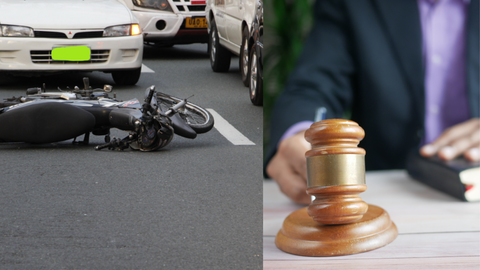Motorcycle accidents can result in serious injuries, substantial property damage, and significant legal ramifications. Understanding the laws that govern motorcycle accidents in your state is crucial for riders to protect their rights and navigate the aftermath of an accident effectively. While specific laws can vary widely from state to state, some general principles apply across the United States.
For more detailed information, consider consulting with a local attorney who specializes in motorcycle accidents to get personalized advice tailored to your specific situation and state laws. This article will explore the key aspects of motorcycle accident laws and what you need to know to stay informed and prepared.
Helmet Laws
Helmet laws are one of the most crucial aspects of motorcycle accident regulations. These laws are designed to protect riders from severe head injuries in the event of an accident. While some states have universal helmet laws requiring all riders to wear helmets, others have partial laws that apply only to certain groups, such as riders under a specific age or those without a certain level of insurance coverage.
For instance:
- California: Universal helmet law requiring all motorcycle riders and passengers to wear a helmet.
- Texas: Riders over 21 with proof of health insurance or having completed a motorcycle safety course are exempt from wearing helmets.
- Florida: Riders over 21 with at least $10,000 in medical insurance coverage are exempt from wearing helmets.

Insurance Requirements
Motorcycle insurance requirements also vary by state. Generally, motorcycle riders must carry a minimum amount of liability insurance to cover bodily injury and property damage caused to others in an accident. Some states also require additional coverage types, such as uninsured/underinsured motorist coverage or personal injury protection (PIP).
For example:
- New York: Requires liability insurance, including $25,000 for bodily injury per person, $50,000 for bodily injury per accident, and $10,000 for property damage.
- Michigan: Requires PIP coverage, which covers medical expenses and wage loss benefits for injured riders.
Fault and No-Fault Laws
Understanding whether your state follows fault or no-fault rules can significantly impact how accident claims are handled. In fault states, the party responsible for the accident is liable for damages. In no-fault states, each party's insurance covers their own medical expenses and lost wages, regardless of who caused the accident.
- Fault States: California, Texas, and Florida are examples where the at-fault party’s insurance pays for damages.
- No-Fault States: New York and Michigan require drivers to carry PIP insurance, and each party’s insurance covers their losses.

Statute of Limitations
The statute of limitations sets the time limit within which you must file a lawsuit following a motorcycle accident. This period varies from state to state and is crucial to adhere to, as failing to file within the designated time frame can result in losing the right to seek compensation.
- California: 2 years from the date of the accident.
- New York: 3 years from the date of the accident.
- Florida: 4 years from the date of the accident.
Comparative and Contributory Negligence
States also differ in how they handle comparative and contributory negligence, which can affect the compensation you receive if you are found partially at fault for the accident.
- Comparative Negligence: Most states, like California and New York, follow comparative negligence rules where your compensation is reduced by your percentage of fault.
- Contributory Negligence: A few states, such as Alabama and Maryland, follow contributory negligence rules, which can bar you from recovering any compensation if you are found to be even slightly at fault.
Lane Splitting Laws
Lane splitting, or riding between lanes of slow-moving or stopped traffic, is a contentious issue with varying legality across states.
- California: Lane splitting is legal and regulated by guidelines from the California Highway Patrol.
- Texas and Florida: Lane splitting is illegal and can result in fines and penalties.
Road Safety and Awareness Programs
Many states have implemented road safety and awareness programs specifically targeting motorcycle riders and other motorists to reduce accidents and improve safety.
- California: The California Motorcyclist Safety Program offers training courses and public awareness campaigns.
- Florida: The Florida Rider Training Program provides mandatory safety courses for new riders.
Understanding the motorcycle accident laws in your state is vital for ensuring your safety, protecting your legal rights, and being prepared in the event of an accident. Always stay informed about helmet requirements, insurance mandates, fault rules, statutes of limitations, and other pertinent regulations. By doing so, you can ride more confidently and be better equipped to handle any legal issues that may arise.
ABOUT THE AUTHOR
Aleksandra Djurdjevic
Senior Content Creator
Aleksandra Djurdjevic is a senior writer and editor, covering motorcycle adventures, biker tips and tricks and general exploring on two wheels. She has previously worked as ESL teacher for English Tochka. Aleksandra graduated from the Comparative Literature department at the Faculty of Philosophy in Serbia. Aleksandra’s love for the biking and adventure, getting out on the open road, year after year across the planet helps her continue to be a top expert at RMJ.






